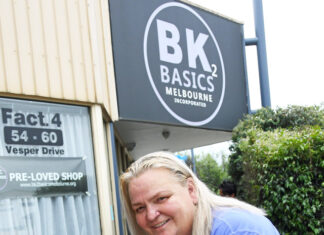 Tyran Jones, Matt Loader, Megan Kirk holding Jayda, Ken and Val Kirk, Matt Harms on the Feed Pad Tour.
Tyran Jones, Matt Loader, Megan Kirk holding Jayda, Ken and Val Kirk, Matt Harms on the Feed Pad Tour.THE wet conditions of the last 12 months have created headaches for the region’s dairy farmers and many have considered feed pads as an option.
Loch was the place to be on Tuesday 7 February when a tour of three feed pads was organised.
Sixty people took part in the tour where feed pad design, planning, construction and on going management was discussed in detail with the help of consultant Matt Harms.
The day was organised as part of the Future Ready Dairy Systems project.
“The project aims to show case on farm action where farmers are making decisions in response to the variable climate in which they farm,” said Tyran Jones, dairy farmer who leads the project in the Gippsland region.
Peter Notman shared the experience of building his feed pad 11 years ago. The concrete feed pad is part of the laneway system with feed troughs up each side.
Generally the pad is used to feed silage when pasture is short and can also be used as a stand off area in winter and late summer periods when pasture damage from over grazing can occur.
Peter shared his experience of planning, building and making use of the feed pad as well as the things he would do differently in hindsight.
In the midst of the wet winter of 2011 many farmers took the decision to build feed pads to manage the adverse conditions.
Paul and Louise Sherar who sharefarm on Phillip Ould’s property did just that.
The 60m long and 15m wide gravel pad was built in May last year.
Using Waste-Not feeders, up to 120 cows are fed in batches as they leave the shed following milking.
The pad proved to be an extremely valuable in very wet conditions.
Barrie Bradshaw from the Department of Primary Industries provided information about effluent management from feed pads and how to design and site a pad.





